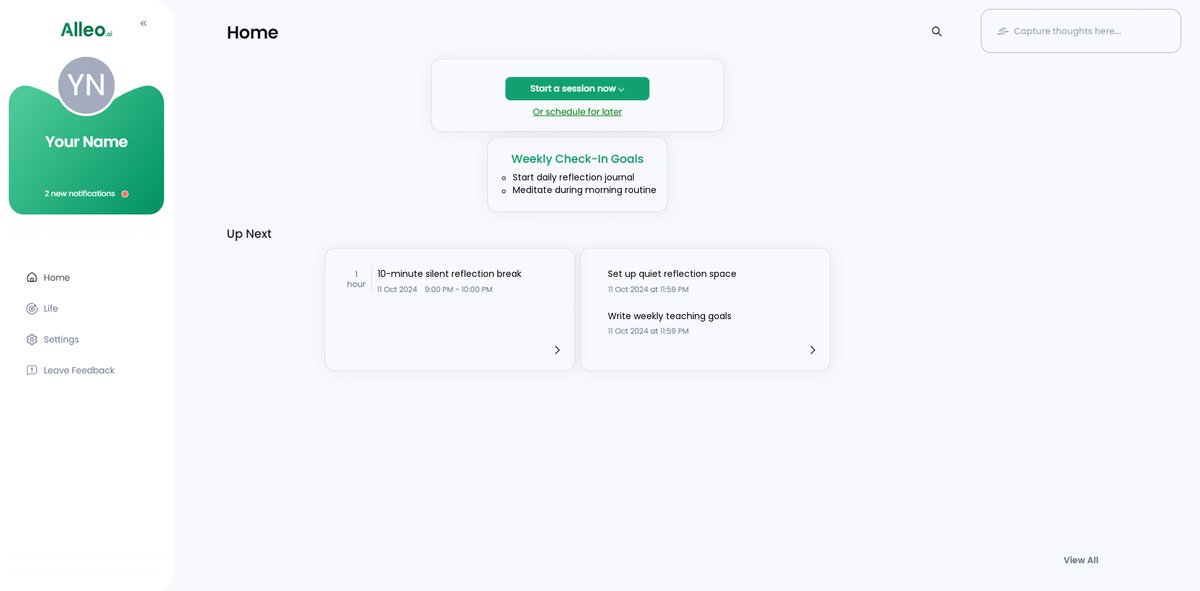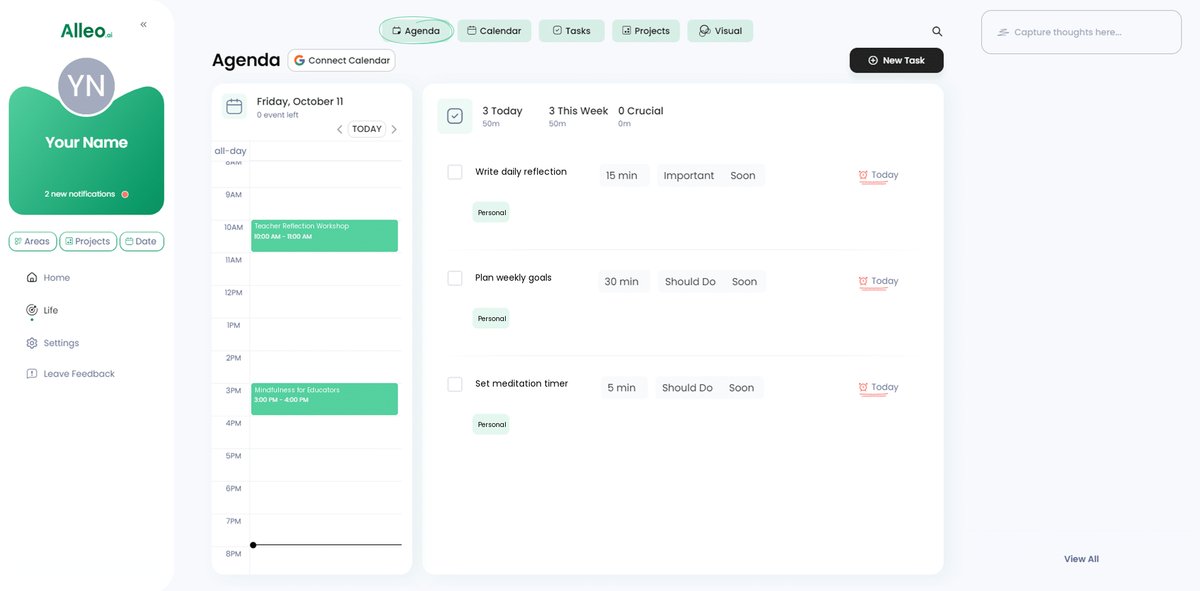4 Powerful Strategies for Teachers to Practice Self-Reflection in Busy Schedules
Are you feeling overwhelmed by the endless tasks and responsibilities as a teacher, leaving little time for self-reflection strategies?
As a life coach, I’ve helped many educators navigate these challenges. I understand the difficulty of balancing teaching responsibilities with personal growth and maintaining teacher work-life balance.
In this article, you’ll discover practical self-reflection strategies for teachers to incorporate into your busy schedule. These methods can improve your teaching quality and well-being through reflective teaching practices and professional development in education.
Let’s dive into these time management techniques for educators and self-improvement strategies for teachers.

Understanding the Struggles of Teacher Self-Reflection
Balancing numerous teaching responsibilities often leaves little room for meaningful self-reflection strategies for teachers. Many clients initially struggle with finding the time and energy needed for introspection and reflective teaching practices.
This lack of reflection can negatively affect teaching quality, professional development in education, and personal well-being.
Several educators report feeling overwhelmed by their workload and emotional fatigue. The constant demands of lesson planning, administrative tasks, and student interactions make it difficult to pause and reflect, impacting teacher work-life balance.
Without self-reflection strategies for teachers, it becomes challenging to identify areas for growth and improvement.
Moreover, the absence of self-reflection can lead to burnout. I often see clients benefit from simple yet consistent reflection practices, such as journaling for educators, but implementing these can be daunting amidst a busy schedule.
The key is to integrate small, manageable reflection activities into daily routines, including mindfulness techniques for teachers.

Overcoming this challenge requires a few key steps. Here are the main areas to focus on to make progress with self-reflection strategies for teachers:
- Use a reflection journal for quick daily notes: Jot down brief reflections each day to track progress and enhance reflective teaching practices.
- Pair meditation with a daily routine activity: Integrate meditation into existing routines to make it sustainable, improving time management for educators.
- Schedule 10-minute silent reflection breaks: Plan short, quiet breaks throughout the day to support self-improvement for teachers and professional development in education.
- Set weekly goals and review progress briefly: Define and evaluate weekly goals to stay focused and motivated, enhancing goal-setting for teachers.
Let’s dive in!
1: Use a reflection journal for quick daily notes
Maintaining a reflection journal is one of the essential self-reflection strategies for teachers that can help track progress and identify areas for growth.
Actionable Steps:
- Start with a 5-minute daily entry: Commit to writing a brief reflection at the end of each day, focusing on key achievements and challenges, as part of your reflective teaching practices.
- Use prompts: Implement specific prompts to guide reflections, such as “What went well today?” and “What could I improve?” to enhance professional development in education.
- Track patterns: Review weekly entries to identify recurring themes or issues that need attention, aiding in goal-setting for teachers.
Explanation: Regular self-reflection strategies for teachers help in improving teaching practices and personal well-being.
By dedicating just 5 minutes each day, you can make self-reflection a habit. Using prompts ensures that your reflections are focused and meaningful, supporting time management for educators.
Reviewing weekly entries helps you spot patterns and areas for improvement. For more on the importance of self-reflection, check out this Edutopia article.
Benefits of keeping a reflection journal as part of self-reflection strategies for teachers:
- Enhances self-awareness
- Provides a record of growth over time
- Helps identify recurring challenges in teaching
In the next section, we will discuss how to pair meditation with daily routine activities as part of mindfulness techniques for teachers.

2: Pair meditation with a daily routine activity
Pairing meditation with daily routine activities can make it easier to incorporate mindfulness into a busy schedule, which is particularly beneficial for self-reflection strategies for teachers.
Actionable Steps:
- Start a mindful morning routine: Integrate a 5-minute meditation session into your morning routine, perhaps while making coffee or preparing breakfast. This can be an effective time management for educators technique.
- Practice walking meditation: Use short walks as opportunities to practice mindfulness, focusing on your breath and surroundings. This is one of the mindfulness techniques for teachers that can easily fit into a busy day.
- Wind down with evening meditation: Pair a brief meditation with your bedtime routine to relax and reflect on the day, supporting teacher work-life balance.
Explanation: Integrating meditation into daily activities helps make mindfulness sustainable and less time-consuming, which is crucial for self-improvement for teachers.
This practice can significantly reduce stress and improve your overall well-being, enhancing reflective teaching practices.
For more insights, consider exploring how mindfulness practices can enhance self-care.
In the next section, we will discuss scheduling 10-minute silent reflection breaks as part of self-reflection strategies for teachers.

3: Schedule 10-minute silent reflection breaks
Scheduling short breaks for silent reflection can significantly enhance your ability to manage stress and improve self-awareness, making it a valuable self-reflection strategy for teachers.
Actionable Steps:
- Block calendar slots: Schedule 10-minute breaks in your calendar specifically for silent reflection, aiding in time management for educators.
- Find a quiet space: Identify a quiet spot in your school or home where you can retreat for these breaks, supporting reflective teaching practices.
- Use a timer: Set a timer to ensure you take these breaks regularly and do not get lost in other tasks, promoting teacher work-life balance.
Explanation: Scheduling short, silent reflection breaks helps you reset and refocus throughout the day. This practice can reduce stress and increase productivity, contributing to self-improvement for teachers.
For more insights on the benefits of silence, check out this LinkedIn article.
Key benefits of silent reflection breaks:
- Reduces mental clutter
- Improves focus and concentration
- Enhances emotional regulation
In the next section, we will discuss setting weekly goals and reviewing progress briefly, which are essential aspects of professional development in education.

4: Set weekly goals and review progress briefly
Setting and reviewing weekly goals can help you stay focused and motivated amidst a busy teaching schedule. This is a crucial self-reflection strategy for teachers aiming to improve their practice.
Actionable Steps:
- Define clear, attainable goals: Set specific, measurable goals for the week on Sunday evening, incorporating reflective teaching practices.
- Mid-week check-in: Allocate a few minutes mid-week to review your progress and adjust goals if necessary, enhancing time management for educators.
- End-of-week reflection: Spend 10 minutes on Friday reflecting on your achievements and areas for improvement, promoting self-improvement for teachers.
Explanation: By defining and reviewing weekly goals, you can maintain clarity and direction in your teaching practice, supporting professional development in education.
This process helps in identifying strengths and areas needing improvement, fostering mindfulness techniques for teachers.
According to Next Gen Learning, setting clear goals is crucial for continuous growth and development.
Elements of effective goal-setting:
- Specificity and measurability
- Realistic and time-bound objectives
- Alignment with long-term aspirations
Implementing these steps can lead to a more structured and satisfying teaching experience, contributing to better teacher work-life balance.

Partner with Alleo on Your Self-Reflection Journey
We’ve explored the importance of self-reflection strategies for teachers, the benefits it brings, and practical strategies. But did you know you can work directly with Alleo to make reflective teaching practices easier?
Alleo is an AI life coach designed to support educators in their professional development in education. It helps you integrate self-reflection into your daily routine and improve time management for educators.
Setting up an account is simple and quick. Once you sign up, Alleo will guide you through creating a personalized plan tailored to your self-improvement for teachers needs.
Alleo will send reminders for daily reflection entries and mindfulness techniques for teachers. It provides prompts to help focus your reflections, similar to journaling for educators.
The coach tracks your goals and progress, offering personalized advice based on feedback. Alleo keeps you accountable with text and push notifications, supporting your teacher work-life balance.
Ready to get started for free?
Let me show you how!
Step 1: Log In or Create Your Account
To begin your self-reflection journey with Alleo, Log in to your account or create a new one in just a few clicks, setting the foundation for your personalized teaching improvement plan.

Step 2: Choose “Building better habits and routines”
Select “Building better habits and routines” from Alleo’s goal options to address your self-reflection challenges as a teacher. This goal directly supports establishing consistent reflection practices and integrating them into your daily schedule, helping you overcome time constraints and develop a sustainable self-improvement routine.

Step 3: Selecting the life area you want to focus on
Choose the “Personal” life area in Alleo to concentrate on self-reflection and mindfulness practices that will enhance your teaching effectiveness and overall well-being. This selection allows you to develop strategies for managing stress, improving work-life balance, and cultivating self-awareness, which are crucial for overcoming the challenges of incorporating self-reflection into your busy teaching schedule.

Step 4: Starting a coaching session
To begin your journey with Alleo, schedule an intake session where you’ll discuss your teaching challenges and self-reflection goals, allowing the AI coach to create a personalized plan tailored to your needs as an educator.

Step 5: Viewing and managing goals after the session
After your coaching session, open the Alleo app and check your home page to see the goals you discussed, allowing you to easily track and manage your progress in self-reflection and teaching improvement.

Step 6: Adding events to your calendar or app
Use Alleo’s integrated calendar and task features to schedule your self-reflection activities, such as journal entries, meditation sessions, and goal reviews, allowing you to easily track your progress and stay committed to your personal growth journey as an educator.

Embrace Self-Reflection for a Better Teaching Journey
It’s time to embrace these self-reflection strategies for teachers to enhance your teaching journey.
Self-reflection might seem daunting, but it’s worth the effort for professional development in education.
A little bit of reflective teaching practices each day can lead to significant improvements.
Remember, using a reflection journal, mindfulness techniques for teachers, silent breaks, and goal-setting for teachers are effective steps.
You deserve to thrive, not just survive, in your teaching career and maintain teacher work-life balance.
Give yourself the gift of self-reflection strategies for teachers.
Alleo can guide you through this process, making it easier to stay on track with your self-improvement for teachers.
Don’t wait.
Start incorporating these reflective teaching practices today, and see the positive changes unfold.
Let Alleo support you on this journey for free.